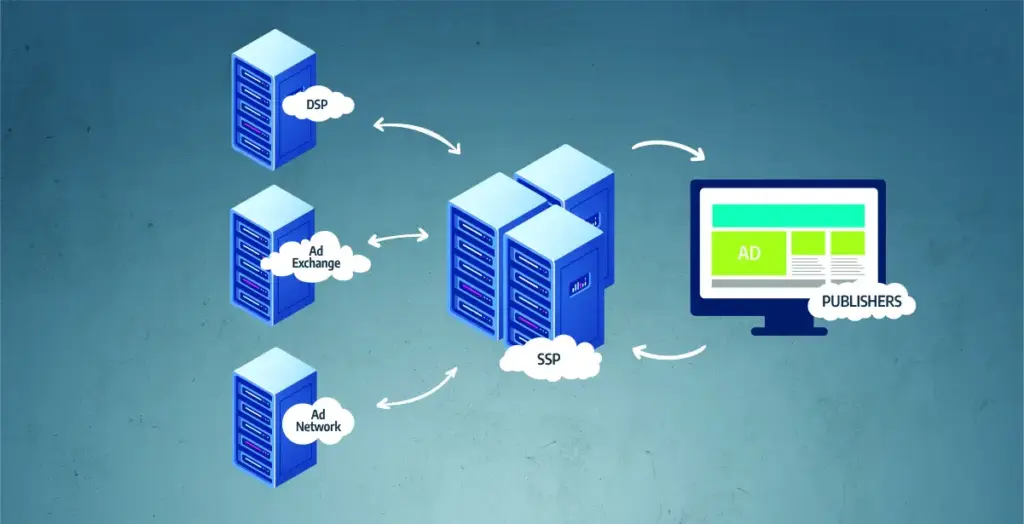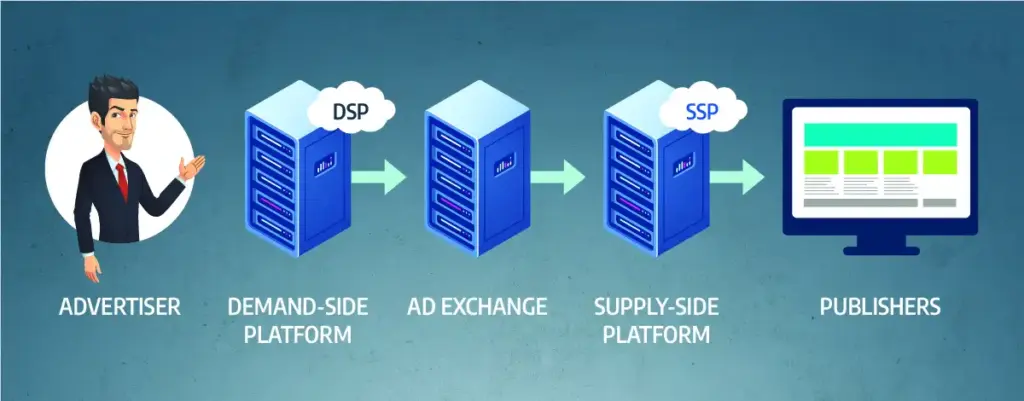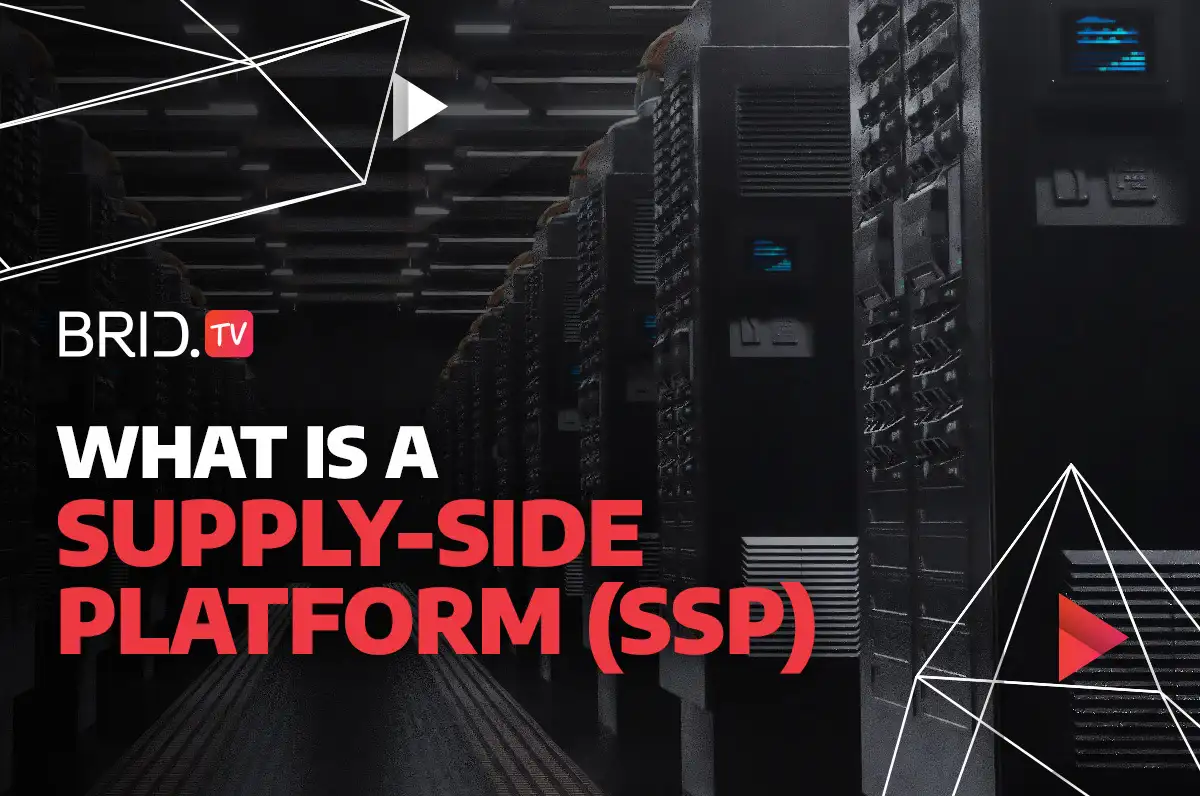With the global shift from traditional advertising to digital marketing, the online world became the hot spot for advertisers worldwide. But considering how quickly the digital world evolves, it shouldn’t be surprising that the online advertising practices changed as quickly. Several years ago, most advertisers relied on display advertising and had to reach out to websites directly to purchase their ad inventory. But that quickly changed as various intermediary services popped up in the form of supply-side platforms.
These platforms appeared as an answer to a growing problem in the industry. As the online realm grew and more large publishers came to prominence, fill rates became an issue. Since publishers needed to find a simple and reliable way to sell their remaining ad inventory, supply-side platforms (SSPs) came into play as the optimal solution.
These platforms let publishers sell their ad inventory to some of the biggest names in the industry. Also, they optimize their yield by connecting them with both demand-side platforms (DSPs) and ad exchanges.
But SSPs became indispensable only once real-time bidding (RTB) became the next big thing in the online advertising world. The reason is that these platforms serve as intermediaries between advertisers and publishers (an auction house of sorts). Nowadays, there is no large online publisher out there who doesn’t utilize the benefits of supply-side platforms.
Just like with anything else in the programmatic advertising world, though, learning the ropes of SSPs and the benefits they provide to publishers is no easy feat. That is why we decided to write this in-depth guide to help you grasp the basics behind supply-side platforms and hopefully help you select the best one for your business.
We know that there’s a lot to digest, so we’ll start from the basics.
What Is a Supply-Side Platform?

A supply-side platform (SSP) is a platform that helps publishers organize, sell, and optimize the distribution of their available ad inventory. These platforms allow publishers to monetize their sites and mobile apps in the most cost-efficient way possible using display, video, or native ads.
Supply-side platforms most often work on an automated auction-based model, where advertisers bid on the publishers’ ad inventory. That allows website owners to optimize their ad yield as they can choose to sell their inventory to the highest bidder. In other words, publishers get to sell their inventory to the best ad networks.
SSPs mediate the real-time bidding process by connecting publishers’ inventories to several ad exchanges and demand-side platforms. That helps them maximize their ad revenue because the more potential buyers publishers have access to, the better their odds of receiving higher CPM rates.
You Might Also Like: Programmatic Video Advertising: What You Need to Know
What Are the Benefits of Using a Supply-Side Platform (SSP)?
As we’ve mentioned above, SSPs are pivotal to real-time bidding transactions as they are “the auction houses” of online advertising. So what is their primary role, and what advantages do they bring to the table?
Supply-side platforms connect to data management platforms (DMPs), ad exchanges, ad networks, and demand-side platforms and streamline the technical side of the programmatic advertising process.
On top of handling all the necessary processes, using them benefits publishers in many ways:
- Automated Inventory Selling — SSPs take full control over publishers’ ad inventory and handle all the selling themselves. That helps streamline the otherwise time-consuming process.
- Real-Time Bidding — Supply-side platforms control the entire bidding process, including choosing the winning advertiser. They do that in an automated fashion through various ad exchanges.
- Ad Yield Optimization With Price Flooring — Aside from controlling the bidding process and selling ad inventory at premium prices, SSPs also allow publishers to assign soft and hard price floors. That helps prevent selling ad inventory to low bidders.
- Frequency Capping — In conjunction with DSPs, SSPs put a cap on the number of times an ad can be shown to the same user.
- Relevancy and Brand Safety — Supply-side platforms ensure publishers only get ads from the most relevant ad networks. They also weed out any inappropriate or blacklisted ads from your website, safeguarding your brand’s reputation.
- Detailed Reporting — Having access to in-depth data on your advertising efforts is essential to optimizing them. SSPs give publishers access to detailed reports on their bidders, eCPM, and much more.
As you can see, supply-side platforms bring a lot to the table. That is why they’ve become an essential component of many publishers’ programmatic advertising efforts. In fact, you’d be hard-pressed to find a prominent publisher that isn’t taking advantage of them nowadays.
How Does a Supply-Side Platform Work?

As we’ve learned by now, a supply-side platform’s primary purpose is to sell publishers’ ad inventories to ad networks, directly to DSPs, or via real-time bidding. SSPs collaborate with DSPs to evaluate advertisers, track available ad inventory, set a bidding range, and filter any bids that don’t meet the publisher’s criteria. All of that happens in several micro-transactions across the ad supply chain and follows these steps:
- A publisher puts their ad inventory on an SSP up for an auction.
- Whenever a user visits a publisher’s web page, a single ad request is sent to several ad exchanges and DSPs via the publisher’s ad server.
- If real-time bidding is on, DSPs will bid on that particular impression.
- Once the winner is decided, the SSP matches it to the right inventory and sends a request to the ad server.
- Once the publisher submits their website as a source for an ad, that will wrap up the process. After that, the ad will appear in its respective slot.
Note: The SSP will insert a pixel code on the publisher’s web page to track visitor behavior. That will allow publishers to later request detailed reports from the platform to track and reevaluate their advertising strategy.
SSP vs. DSP — What’s the Difference?
A question most of you probably have by now is: “What’s the difference between SSP and DSP?” We understand why you’d wonder that since these two services are pretty similar. However, there are some crucial distinctions between them.
A supply-side platform in its core is a platform publishers use to have an easier time communicating with various ad exchanges. It helps publishers handle the complicated process of selling and managing their ad inventory.
A demand-side platform provides an intuitive interface that advertisers use to manage buying ad inventory through multiple ad exchanges. However, a DSP has to connect to an SSP to enable bidding on publishers’ ad inventory.
As you can see, SSPs and DSPs have a similar role in the programmatic ecosystem, but they represent entirely different parts of it. SSPs are tools that publishers use to distribute their ad inventory, while DSPs operate on the advertisers’ ends. In other words, SSPs deal with selling ad inventory, while DSPs are in charge of buying it. That’s the gist of it!
You Might Also Like: The Effectiveness of Video Advertising for Your Brand
What to Look for in a Supply-Side Platform
Not all SSPs are born equal, so choosing the best one for your business is crucial to maximizing your ad revenue. So when you set out on your search, here are a few essential features to look for:
- User-Friendly UI — Having an intuitive and user-friendly UI should be a given. After all, the entire purpose of SSPs is to simplify your digital advertising endeavors. If you can barely find your way around their CMS, it kills the entire point of the service.
- In-Depth Analytics and Custom Reporting — Publishers need quantitive data to know how their site’s ads are performing, which is what makes these features invaluable. That way, they can implement changes to maximize their revenue when necessary.
- Seamless Integration — Integrating SSPs with various ad exchanges should be a smooth a seamless process that doesn’t require much (if any) technical know-how. That improves their accessibility significantly and is what makes the best platforms stand out.
- Header Bidding — Header bidding is likely the reason you’re looking for an SSP in the first place, so this feature is a must-have!
- Yield Optimization — If your supply-side platform of choice doesn’t offer various yield optimization features like price flooring, you should keep looking. These features are pivotal for publishers and exist to help them maximize revenue.
- Inventory and Campaign Management — Finally, every SSP should offer publishers inventory and campaign management tools that would give them greater control over their ad inventory distribution.
Although the above might seem like a lot to ask for, it’s not. Most quality SSPs will have all of the above features, so you’re unlikely to have trouble finding the best one for you. If you need a place to start, we’ve prepared a short overview of some of the best supply-side platforms below. Let’s check them out!
Best Supply-Side Platforms for Publishers
Here’s a short list of supply-side platforms that are an excellent place to start for most publishers. We’ve included various picks that focus on different aspects of programmatic advertising, so you’re bound to find some suitable ones for your brand.
1. Google Ad Manager

Google Ad Manager is one of the largest programmatic advertising platforms globally, holding 37% of the online advertising market share. Being hosted by its parent company, Google, it is an ad serving platform that offers management and optimization tools publishers can use to improve their online advertising game.
The best part about using Google Ad Manager is that publishers get access to millions of quality advertisers. Also, Google offers some of the best CPMs on the market. That makes it one of the best SSPs to start with if you’re looking for maximum profit for minimal costs!
2. Verizon Media

Verizon Media is an excellent SSP for publishers looking to make the most out of digital video advertising. This platform provides an excellent bang for your buck for its effectiveness in delivering reliable ROI.
If you opt for Verizon, you will get access to outstream video ads on your site that yield higher CPMs than most other online advertising forms. Aside from these unique features, Verizon also takes care of its publishers by offering various brand safety tools to help you weed out unwanted ads.
3. PubMatic

PubMatic is an immediately recognizable name in the online advertising industry. This SSP offers publishers extensive control over their advertising efforts while providing top-end security and various ad formats on desktop and mobile.
The platform prides itself on its publisher-first approach. That is why so many flock to PubMatic and deem it one of the best-established names in the industry.
4. Rubicon Project

Rubicon Project’s automated advertising platform is perfect for publishers looking to connect with various major advertisers in the industry since Rubicon has over a billion customers. This SSP lets publishers enjoy all the benefits of automation while still providing the necessary features to maximize revenue across multiple ad formats.
6. SpringServe

SpringServe is one of the top-tier ad servers for video and tech companies with its vast state-of-the-art video ad serving tools. This video ad network and SSP offers publishers excellent tools for fine-tuning their creatives and prides itself on its user-friendly and intuitive UI.
This SSP also supports advanced header bidding and macros for GDPR compliance, so if that’s something you’re in dire need of, you’ll get it! But the best part of SpringServe is likely its automatic optimization feature that allows automatic adjusting of ad tag parameters every 20 minutes. This feature will come quite in handy for publishers looking to maximize their fill rates!
7. Xandr

Xandr, formerly known as AppNexus Marketplace, is one of the online advertising industry veterans! This company has introduced multiple AdTech products over the years, including an SSP!
The unique aspect of this platform is that it relies on cloud technology while optimizing programmatic advertising. But what publishers will love the most is their enterprise technology that makes this SSP a hot spot for large advertisers and publishers from all across the world.
One thing is for sure — you won’t make the wrong choice by opting for Xandr!
Closing Thoughts
We know that the programmatic advertising landscape can be intimidating, especially for newcomers. That’s why we hope this article helped you learn the ropes of supply-side platforms and their role in the online advertising process.
So if you’re a publisher looking to start monetizing your site by selling your ad inventory, we suggest you find a home with one (or more) of these SSPs to maximize your revenue. Just remember what we mentioned above and ensure your SSP of choice has everything you need to dominate the online advertising world!
Best of luck to you!
